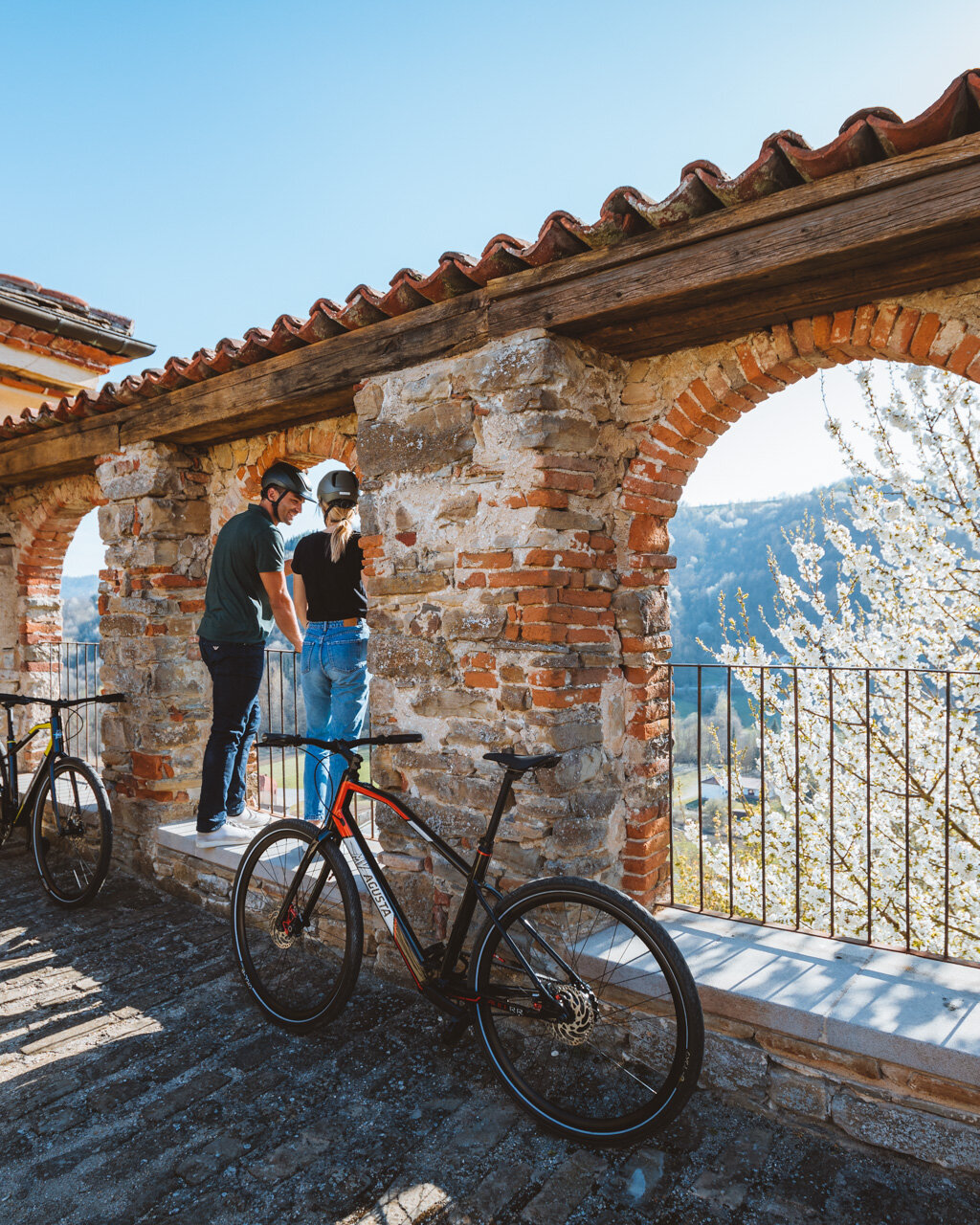The trek begins and ends in the village of Grinzane Cavour, where the wonderfully preserved castle of Count Cavour is situated. Count Camillo Benso di Cavour, the great thinker and politician, considered one of the most important minds behind the unification of Italy, lived in this village during the 19th century.
Today, the castle contains a museum of history and local culture, plus one of the oldest 'Regional Enoteca' (Regional Wine Centre) dedicated to the wines of the region. The route plunges the visitor into the world-famous Barolo wine-growing area situated right at the heart of the low Langa Hills (Bassa Langa). We advise a pause in the historical centre of the village of Monforte, one of the region's prettiest, which has won the Italian Touring Club's much sought-after 'Orange Flag' distinction. More than a 'stop on the way', Monforte is an experience that will long persist in the mind's eye and on the palate, if you choose to enjoy a glass of the village's excellent Barolo while enjoying the views.
Back to the bike, the route takes you up and away into the High Langa, (Alta Langa), where the predominantly vine-dominated landscape gives way to a wilder one of woods and hazel groves, and man's influence is less evident. The end of the trip is in Bossolasco, an attractive little village famous for its summer flowers and which possesses a delightfully peaceful atmosphere.
The way back takes you through the hills and down again to the vineyards of the Bassa Langa to the village of Diano d'Alba with its Belvedere, where you can enjoy another of the most spectacular views of the area: 360 degrees of hilltop castles and towers, picturesque villages, inland cliffs and cultivated fields of all colours. Here again, the spirit - in addition to the legs - can enjoy a well-earned rest. This round route ends once again in Grinzane Cavour, where, if you so choose, a refreshing snack of tasty local foods is one of the treats in store.
Request info for this itineraryPLEASE NOTE: Responsibility for the maintenance and practicability of the various trails lies with the municipalities where the routes are located. The Tourist Board, therefore, cannot be held responsible for any inefficiencies, but is willingly available to collect your reports so that they can be forwarded to the authorities concerned.


